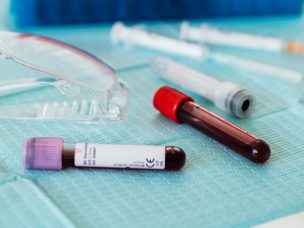Lupus
Psoriasis Tied to Elevated Risk for Celiac Disease
People with psoriasis have double the odds of celiac disease versus people without psoriasis Individuals with psoriasis have double the odds of having celiac disease (CD) versus individuals without psoriasis, according to a research letter published online Feb. 9 in the Journal of the American Academy of Dermatology. Marina Z. Joel, from the Johns Hopkins...
Comorbidities Explored in Palmoplantar Pustulosis
Patients with palmoplantar pustulosis (PPP) have an overlapping comorbidity profile with patients with psoriasis vulgaris, according to a study published in JAMA Dermatology. Dong Hyo Kim, M.D., from the Seoul National University College of Medicine in South Korea, and colleagues conducted a nationwide population-based cross-sectional study involving Korean patients diagnosed with PPP, psoriasis vulgaris, or...
Renal C4d as a Biomarker in Pediatric Lupus Nephritis
Medically reviewed by Dr. Samuel Sarmiento, M.D., MPH on Oct. 4, 2023 A recent study of pediatric lupus nephritis disease activity and severity in pediatric-onset systemic lupus erythematosus patients found that renal C4d shows promise as a biomarker for renal disease in this patient population. Systemic lupus erythematosus (SLE) is a chronic autoimmune disease affecting multiple systems....
Uncommon Union: Lupus Nephritis and Lupus Erythematosus Tumidus
Medically reviewed by Dr. Samuel Sarmiento, M.D., MPH on Oct. 4, 2023 A recent case study reports on the co-occurrence of lupus erythematosus tumidus and lupus nephritis—an extremely rare manifestation of lupus—in a 38-year-old woman. Systemic lupus erythematosus (SLE) is known for its diverse array of clinical manifestations, encompassing various organ systems. Among these, lupus nephritis and...
A Guide to Recognizing Early Signs of Lupus in Women
Lupus can potentially create serious and lifelong problems. It can damage organs and lead to skin discoloration or permanent hair loss. These are not problems anyone wants to end up dealing with. The best way to stop this from happening is to detect lupus early. Early treatment can be provided in these cases, which can...
Understanding Lupus: Exploring the 4 Different Types
Many people know what lupus is and have a general idea of what it involves. However, there are multiple different types of lupus. This adds an additional complication when dealing with any case of lupus. This article will cover four types of lupus. It will also explore how various lupus-related skin conditions fall into their...
Systemic Lupus Erythematosus Increases Immunoglobulin Gamma-3 Chain C
Increased serum, salivary, and urinary immunoglobulin gamma-3 chain C levels are observed in systemic lupus erythematosus patients. Immunoglobulin gamma-3 chain C (IGHG3) is a type of IgG that plays a major role in the pathogenesis of systemic lupus erythematosus (SLE). It contributes to hypergammaglobulinemia and IgG immune complex deposition in tissues, leading to organ damage...
Association of Epstein–Barr Virus and Cytomegalovirus with Drug-Induced Lupus
Increased antibodies to Epstein–Barr virus and cytomegalovirus in patients with drug-induced lupus indicate their contribution to the development of the disease. Epstein–Barr virus (EBV) and cytomegalovirus (CMV) are implicated in systemic lupus erythematosus (SLE) pathogenesis. Drug-induced lupus (DIL) is a lupus-like disease resulting from therapeutic drug intake. DIL represents approximately 10–15% of all lupus cases....
Noncoding RNAs in Systemic Lupus Erythematosus: New Insights and Opportunities
Recent research highlights the crucial role of noncoding RNAs in the pathogenesis of systemic lupus erythematosus, offering a deeper understanding of the disease and opening doors for targeted therapies. Noncoding RNAs, including microRNAs, long noncoding RNAs, and circular RNAs, contribute significantly to the pathogenesis of systemic lupus erythematosus. Dysregulation of noncoding RNAs can impact signaling...
More Medical News














